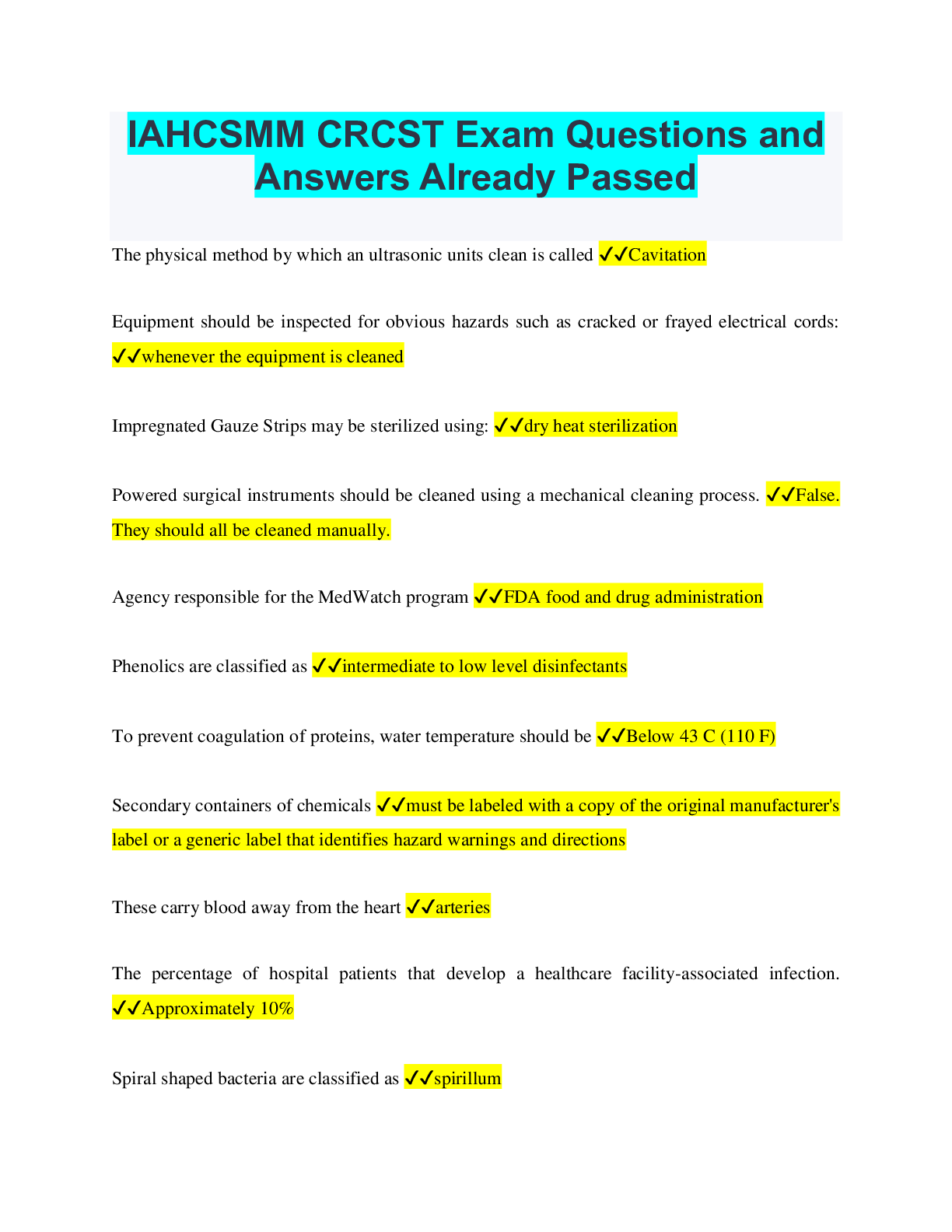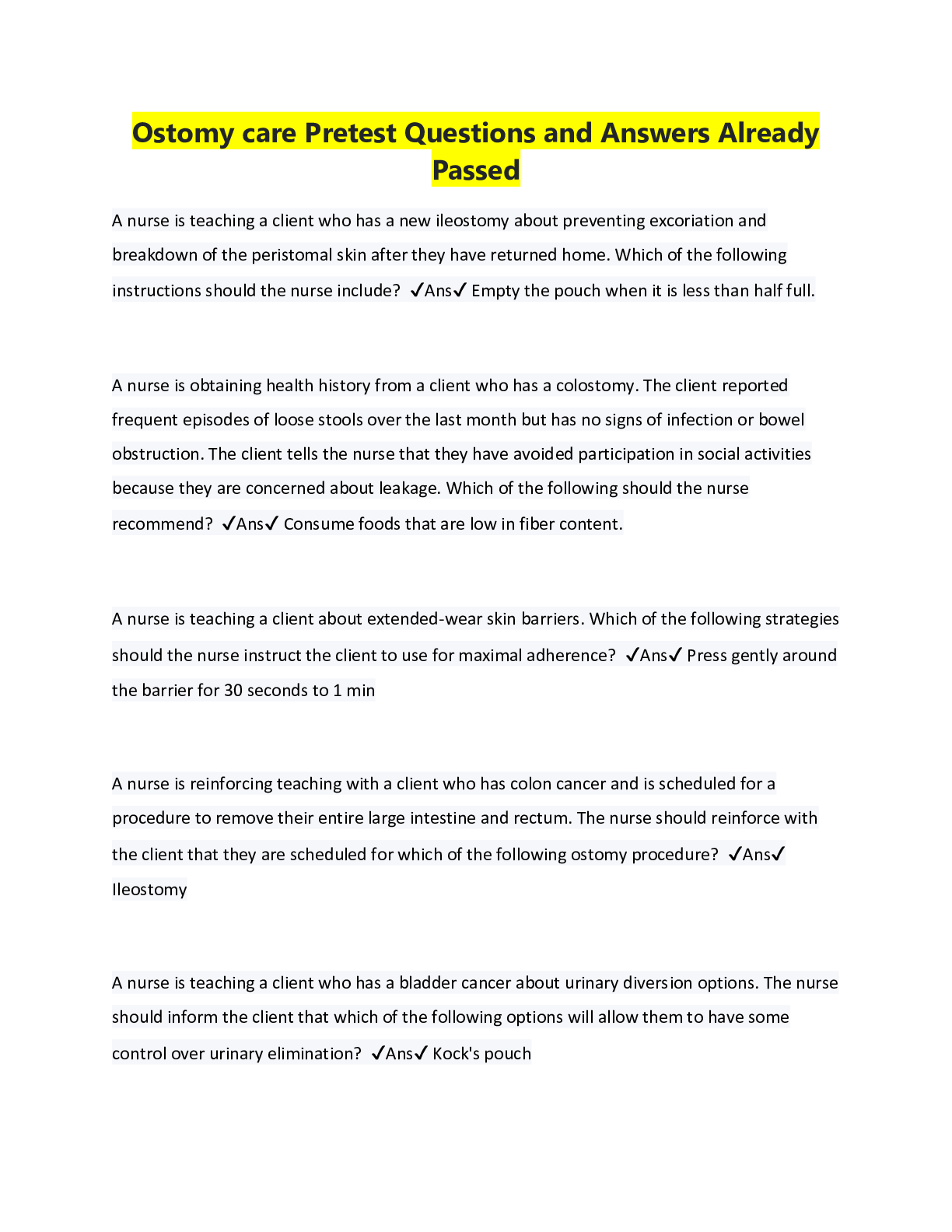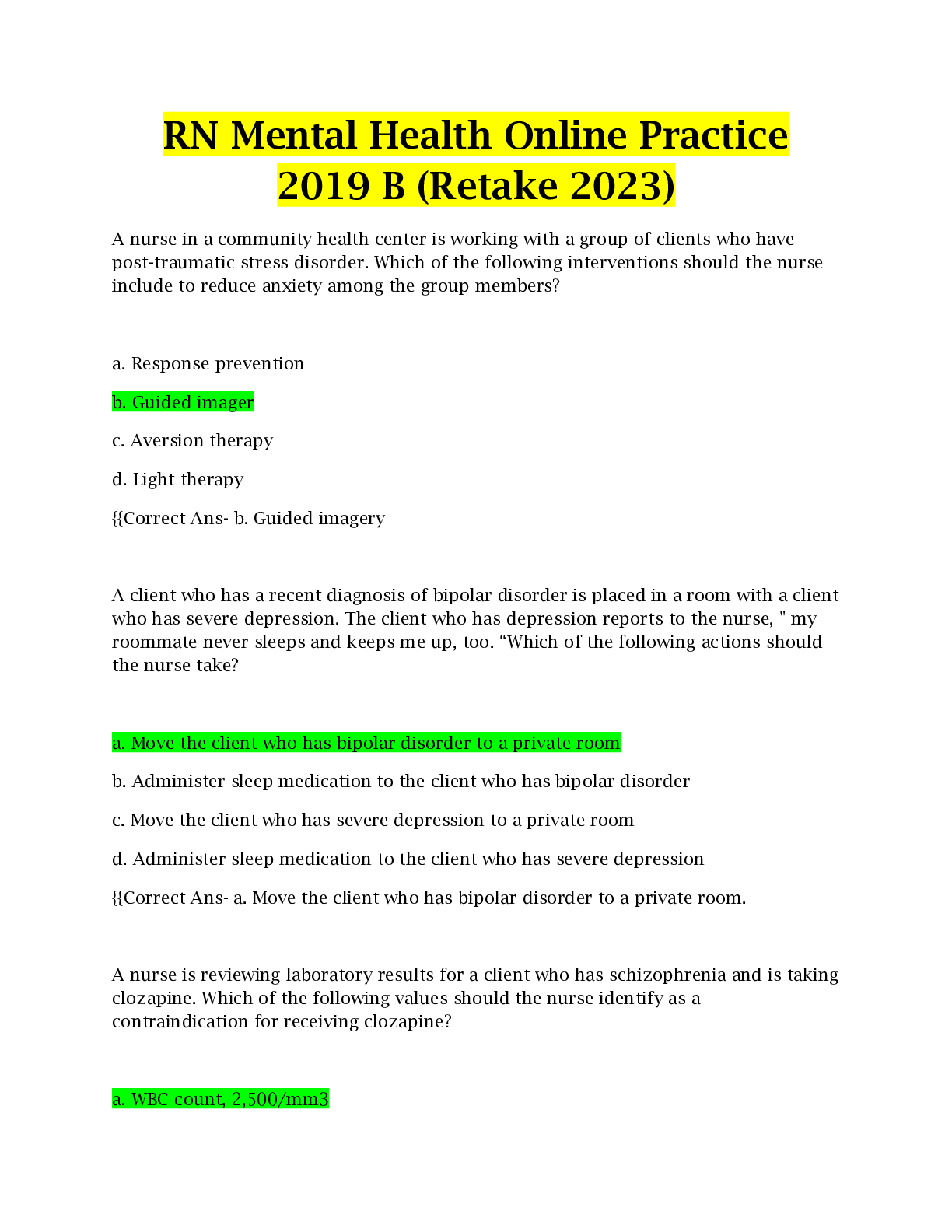Paediatrics > QUESTIONS & ANSWERS > PEDS ATI B Questions and Answers Already Passed (All)
PEDS ATI B Questions and Answers Already Passed
Document Content and Description Below
PEDS ATI B Questions and Answers Already Passed A nurse in an emergency department is auscultating the lungs of an adolescent who is experiencing dyspnea. The nurse should identify the sound as whi... ch of the following? ✔✔Wheezes The nurse should identify the sound during auscultation as wheezes, which are high-pitched, musical or whistling-like sounds heard primarily on expiration as air passes through and vibrates narrowed airways. A nurse is admitting a 4 month old infant who has heart failure. Which of the following findings is the nurse's priority? ✔✔Episodes of vomiting When using the urgent vs. nonurgent approach to client care, the nurse should determine that the priority finding is three episodes of vomiting. This can indicate digoxin toxicity, which requires immediate intervention. Therefore, this is the nurse's priority finding. A nurse in a provider's office is caring for a school-age child who has varicella. The parent asks the nurse when their child will no longer be contagious. Which of the following responses should the nurse make? ✔✔When your child's lesions are crusted, usually 6 days after they appear The nurse should inform the parent that the child is contagious 1 day prior to lesion eruption and until the vesicles have crusted over, which usually takes about 6 days. A school nurse is caring for a child following a tonic clonic seizure. Which of the following actions should the nurse take first? ✔✔Check the child's respiratory rate When using the airway, breathing, and circulation approach to client care, the nurse should determine the priority action is to assess the child's respiratory rate. If the child is not breathing, the nurse should administer rescue breaths. A nurse is caring for a 10 year old child following a head injury. Which of the following findings should the nurse identify as an indication that the child is developing diabetes insipidus? ✔✔Sodium 155 mEq/L A child who has a head injury can develop diabetes insipidus as a result of pituitary hypofunction leading to a deficiency of antidiuretic hormone. Underexcretion of antidiuretic hormone leads to polyuria and polydipsia, and possibly dehydration. With the excessive loss of free water, sodium levels rise above the expected reference range of 136 to [Show More]
Last updated: 1 year ago
Preview 1 out of 25 pages
Instant download
.png)
Instant download
Also available in bundle (1)
.png)
ATI PEDS BUNDLED EXAMS QUESTIONS AND ANSWERS WITH COMPLETE AND VERIFIED SOLUTIONS
ATI PEDS BUNDLED EXAMS QUESTIONS AND ANSWERS WITH COMPLETE AND VERIFIED SOLUTIONS
By Nutmegs 1 year ago
$20
15
Reviews( 0 )
Document information
Connected school, study & course
About the document
Uploaded On
Feb 02, 2023
Number of pages
25
Written in
Additional information
This document has been written for:
Uploaded
Feb 02, 2023
Downloads
0
Views
82

.png)
.png)
.png)
.png)
.png)
.png)
.png)
.png)
.png)
.png)
.png)

.png)

.png)
.png)
.png)



.png)

.png)





.png)
.png)
.png)
.png)
.png)
.png)

